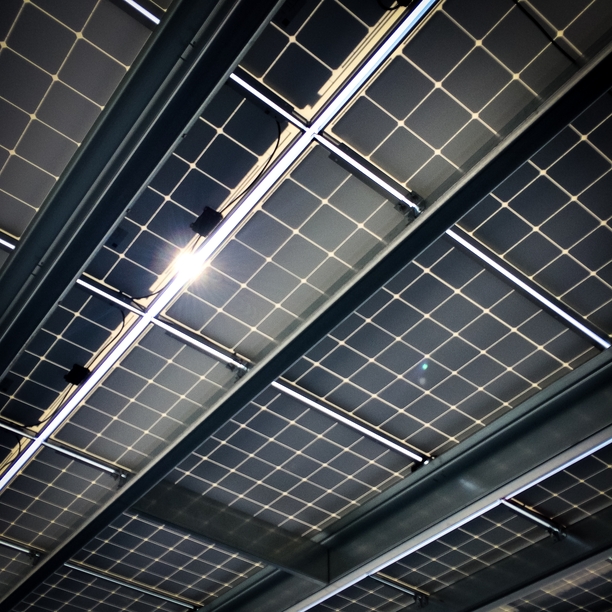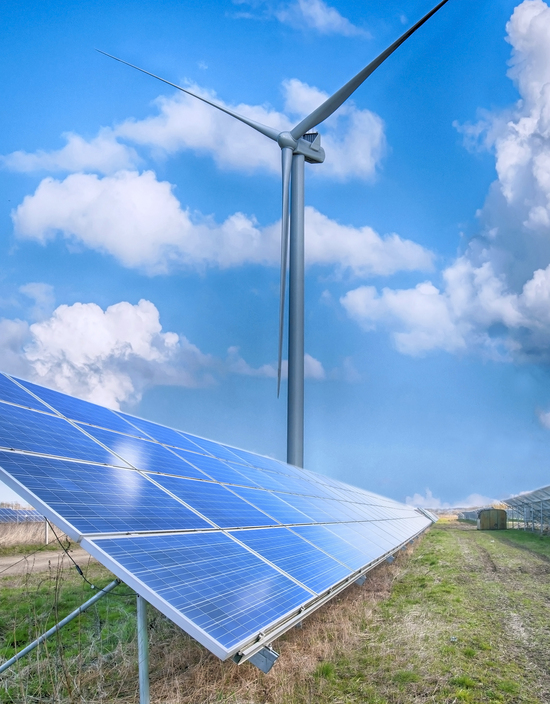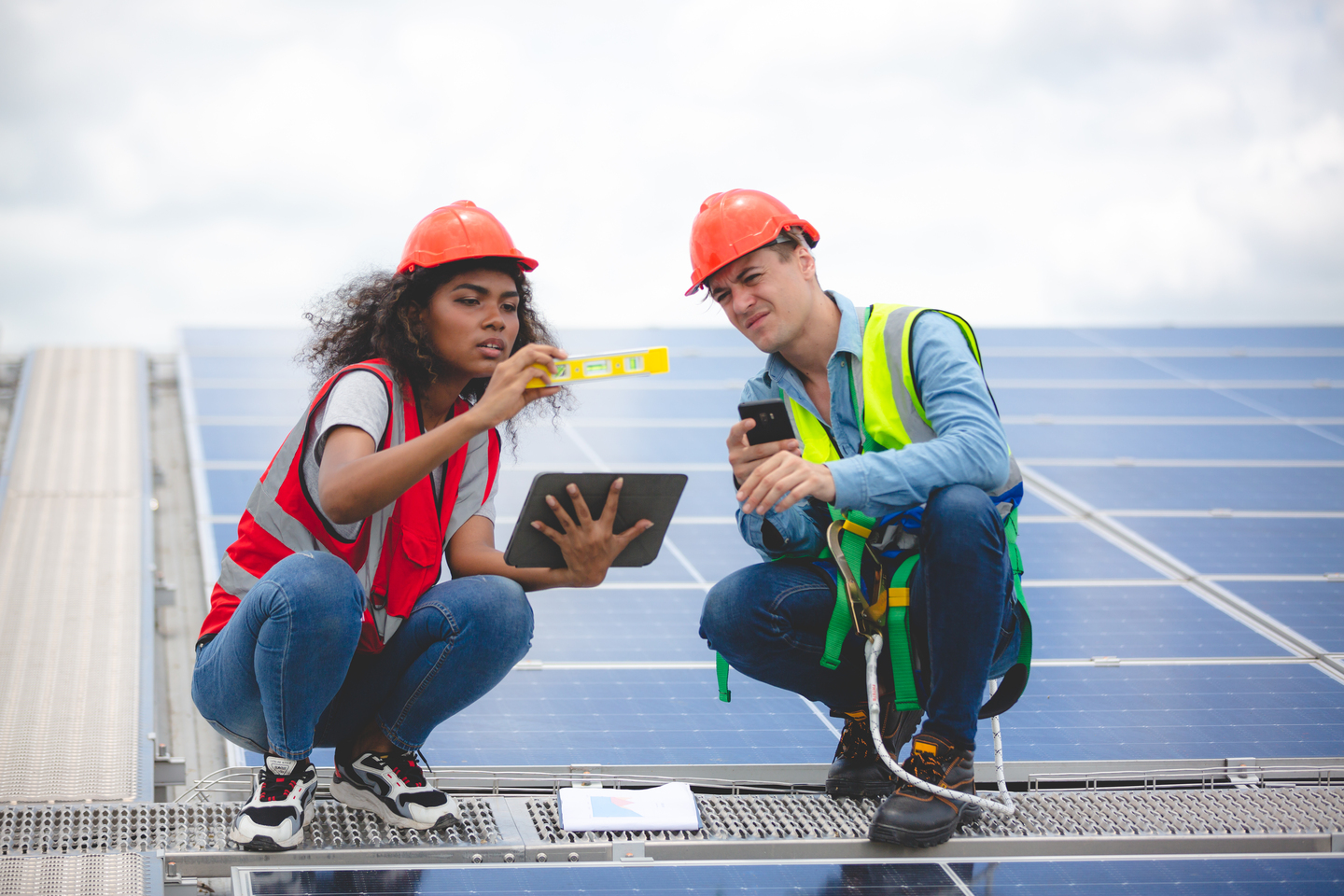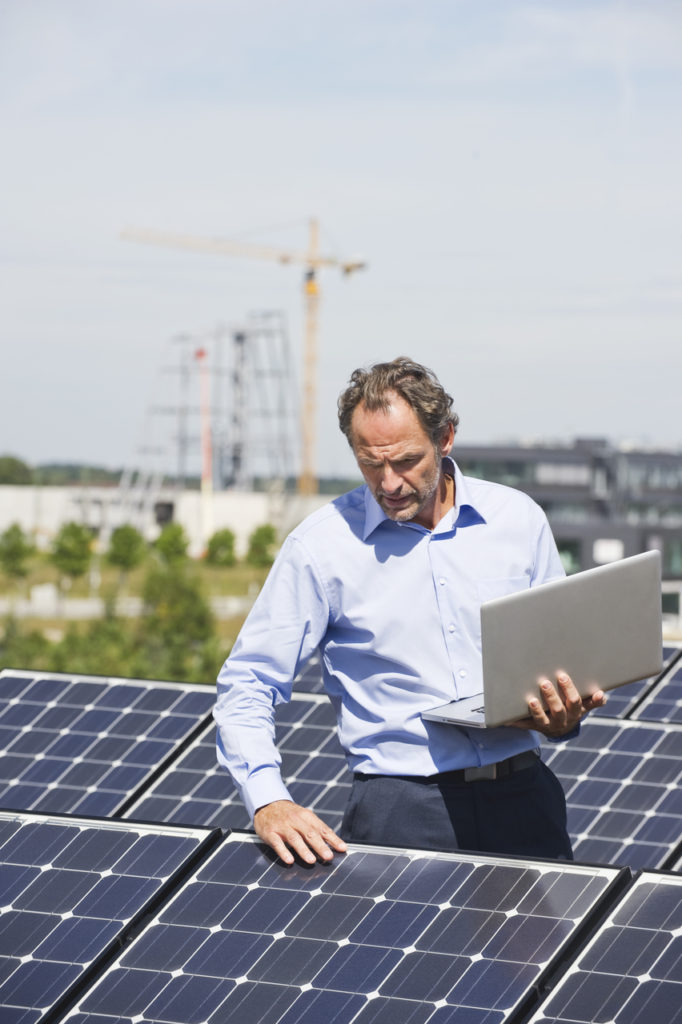Solar energy can be applied in all states in the United States to some extent. However, the feasibility and efficiency of solar energy systems may vary depending on several factors, including geographical location, climate conditions, local regulations, and available resources.



Geographical Location
Geographical location plays a crucial and influential role in the successful application of solar energy. The amount of sunlight that a particular location receives stands as a primary and decisive factor in assessing the potential for solar power generation in that area. The availability and intensity of sunlight directly impact the efficiency and output of solar energy systems, making it a vital consideration when evaluating the suitability of a location for solar installations.
Regions with abundant sunlight can harness the energy of the sun more effectively, maximizing the power generation capacity of solar panels.

On the other hand, areas with limited sunlight may face challenges in achieving optimal energy production, requiring careful planning and utilization of available resources to ensure the viability of solar projects. Therefore, understanding and analyzing the solar irradiance and insolation patterns specific to a geographical location are essential steps in determining the feasibility and potential success of solar energy applications.
Sunlight Availability
Areas situated closer to the equator are typically blessed with an advantage when it comes to solar energy potential. These regions receive a higher amount of direct sunlight throughout the year due to their proximity to the sun’s path, resulting in an increased solar energy potential. The more direct the sunlight, the more efficiently solar panels can convert it into usable electricity.
In addition to proximity to the equator, other environmental factors further enhance the suitability of certain areas for solar installations. Regions characterized by clear skies provide an optimal condition for solar energy generation as they allow a greater amount of sunlight to reach the solar panels without obstruction. Limited cloud cover ensures that solar panels receive more consistent and sustained solar irradiance, maximizing their energy output.
Latitude
 As you venture closer to the poles, the angle at which sunlight reaches the Earth progressively becomes less favorable for solar energy generation. The curvature of the Earth causes the sun’s rays to spread over a larger surface area, resulting in a reduced concentration of solar energy per unit area. This phenomenon, combined with the longer shadows cast by the oblique sunlight, diminishes the overall solar potential of regions located in higher latitudes.
As you venture closer to the poles, the angle at which sunlight reaches the Earth progressively becomes less favorable for solar energy generation. The curvature of the Earth causes the sun’s rays to spread over a larger surface area, resulting in a reduced concentration of solar energy per unit area. This phenomenon, combined with the longer shadows cast by the oblique sunlight, diminishes the overall solar potential of regions located in higher latitudes.
Consequently, states situated closer to the equator, such as those in the southern United States, benefit from more direct and intense solar radiation throughout the year. The sun’s rays strike the Earth’s surface at a steeper angle, allowing for higher concentrations of solar energy per unit area. This increased solar potential in equatorial regions translates into more efficient and productive solar energy systems.
In contrast, states in the northern regions of the United States, due to their higher latitudes, experience lower solar potential.
 The oblique angle at which sunlight reaches these areas leads to a larger dispersion of solar energy and reduced intensity, impacting the performance of solar panels. Although solar power generation is still viable in these regions, the lower solar potential necessitates larger solar panel installations to achieve comparable energy output to that of states closer to the equator.
The oblique angle at which sunlight reaches these areas leads to a larger dispersion of solar energy and reduced intensity, impacting the performance of solar panels. Although solar power generation is still viable in these regions, the lower solar potential necessitates larger solar panel installations to achieve comparable energy output to that of states closer to the equator.
Therefore, when considering solar energy potential, locations in the southern United States typically exhibit better conditions for harnessing solar power than their northern counterparts. The more direct and concentrated sunlight in these equatorial regions ensures higher solar energy yields, making them more conducive to efficient solar energy generation.
Climate Conditions
While the availability of sunlight is undeniably crucial for solar energy generation, local climate conditions exert a significant influence on the efficiency and performance of solar panels. Extreme temperatures, whether excessively hot or cold, can impact the overall effectiveness of solar panels.

In regions with scorching temperatures, such as desert environments, excessively high heat can lead to a decrease in panel efficiency.
The heat can cause the panels to operate at higher temperatures, which can result in a drop in their electrical output. However, modern solar panels are designed to mitigate this effect through improved thermal management techniques, such as advanced heat dissipation systems and more efficient cell materials. These advancements help maintain the panels’ performance even in hot climates.
On the other hand, areas with high humidity levels may experience challenges related to panel functionality. Excessive moisture in the air can affect the electrical components of solar panels, potentially leading to malfunctions or reduced performance. However, manufacturers have developed protective measures, such as moisture-resistant encapsulation materials and corrosion-resistant coatings, to enhance the durability and longevity of solar panels in humid environments.
Shading and Obstructions
The presence of buildings, trees, or any structures that cast shadows on solar panels can have a substantial impact on their overall performance and efficiency. When shadows fall on solar panels, they obstruct the direct sunlight that the panels need to generate electricity. As a result, the affected areas of the panels produce less power, reducing the overall energy output.

To maximize the efficiency of solar installations, it is crucial to ensure that the panels have uninterrupted access to direct sunlight for a significant portion of the day. This means minimizing or eliminating shading from surrounding objects or structures that could hinder the panels’ exposure to sunlight.
Buildings, in particular, can cast shadows on solar panels, especially during certain times of the day when the sun’s position aligns with their orientation. It is important to consider the placement and orientation of the solar panels in relation to nearby structures to minimize shading. This may involve strategic panel placement, angling, or adjustments to the building’s design to optimize sunlight exposure.
Similarly, trees and vegetation can pose shading challenges for solar installations. As trees grow, their branches and leaves may extend over the panels, blocking sunlight and reducing energy production. Regular trimming and maintenance of trees surrounding solar installations are essential to prevent shading issues. Proper planning and site selection can also help mitigate the potential impact of existing trees or allow for strategic planting of vegetation that does not obstruct sunlight.
Land Availability
 The availability of suitable land for solar energy installations is a crucial factor to consider when planning solar projects. Different states and regions vary in terms of land characteristics and availability, which can impact the scale and type of solar installations implemented.
The availability of suitable land for solar energy installations is a crucial factor to consider when planning solar projects. Different states and regions vary in terms of land characteristics and availability, which can impact the scale and type of solar installations implemented.
Certain states possess vast expanses of open spaces, making them particularly well-suited for large-scale solar farms. These areas often feature abundant flat or gently sloping land that allows for the efficient deployment of solar panels in arrays or rows. The availability of such extensive land areas enables the development of utility-scale solar projects, where multiple solar panels are installed to generate a substantial amount of electricity. These large-scale solar farms can take advantage of economies of scale, making them cost-effective and capable of providing significant energy contributions to the grid.
However, in states with limited land availability or densely populated urban areas, alternative solutions such as rooftop solar installations become necessary. Rooftop solar systems utilize the available space in residential, commercial, or industrial buildings to house solar panels. By converting rooftops into energy-generating platforms, these installations maximize the utilization of existing structures and reduce the need for additional land. Rooftop solar offers a decentralized approach, allowing individual buildings or properties to generate their own renewable energy and reduce reliance on the grid.
Climate Conditions
One of the primary climate-related considerations is solar radiation, which refers to the amount and intensity of sunlight received by a particular region.
 Regions with abundant solar insolation, characterized by extended hours of bright sunlight, hold greater potential for solar energy generation. These areas typically enjoy clear skies, minimal cloud cover, and low levels of atmospheric pollution, facilitating high levels of solar radiation that can be efficiently harnessed by solar panels.
Regions with abundant solar insolation, characterized by extended hours of bright sunlight, hold greater potential for solar energy generation. These areas typically enjoy clear skies, minimal cloud cover, and low levels of atmospheric pollution, facilitating high levels of solar radiation that can be efficiently harnessed by solar panels.
Temperature also plays a significant role in the operation of solar panels. While solar panels generate electricity through the photovoltaic effect, excessive heat can adversely affect their efficiency and output. In hot climates, the rise in panel temperature can cause a decrease in their performance, resulting in reduced energy generation. However, advancements in solar panel design have introduced innovative solutions to address this challenge. Technologies such as improved thermal management systems and more efficient cell materials help mitigate the negative effects of heat, allowing solar panels to maintain optimal performance even in high-temperature environments.
Solar Radiation
The amount and intensity of solar radiation received by a location determine the potential for solar energy generation. Regions with high solar insolation, characterized by long hours of bright sunlight, have greater solar energy potential. Areas with clear skies, minimal cloud cover, and low atmospheric pollution typically experience higher solar radiation levels.
Temperature

Solar panels operate most efficiently within a certain temperature range. While solar panels generate electricity through the photovoltaic effect, excessive heat can reduce their efficiency and output. In hot climates, the rise in panel temperature can lead to a decrease in performance. However, modern solar panel designs incorporate technologies to manage and dissipate heat, helping maintain optimal performance even in high-temperature environments.
Humidity
High humidity levels in the air do not directly affect the efficiency of solar panels, but excessive moisture can lead to dust and dirt accumulation on the panel surfaces, reducing their overall performance. Regular cleaning and maintenance can mitigate the impact of humidity on solar panel efficiency.
Weather Patterns
Climate conditions such as frequent cloud cover, rain, or snowfall can affect the availability of direct sunlight and, consequently, the energy output of solar panels. Extended periods of cloudy weather can reduce solar energy production, while heavy rain or snow accumulation can temporarily hinder panel performance until cleared. However, even in regions with variable weather patterns, solar energy systems can still contribute to overall energy needs, as panels can still generate power during suboptimal weather conditions.
Extreme Weather Events
Regions prone to severe weather events, such as hurricanes or hailstorms, may pose risks to solar installations. Strong winds, heavy rains, or hail can damage solar panels, requiring appropriate design considerations and installation techniques to withstand such conditions. Ensuring the durability and resilience of solar panels is crucial in areas prone to extreme weather events.
Local Regulations
 Local regulations play a pivotal and multifaceted role in the successful application and deployment of solar energy systems. These regulations, established by local governments, municipalities, and utility companies, encompass a range of guidelines, requirements, and permits that govern the installation, operation, and integration of solar installations within a specific region.
Local regulations play a pivotal and multifaceted role in the successful application and deployment of solar energy systems. These regulations, established by local governments, municipalities, and utility companies, encompass a range of guidelines, requirements, and permits that govern the installation, operation, and integration of solar installations within a specific region.
One key objective of local regulations is to ensure the safety of solar energy systems. These regulations often include specific guidelines for the design, installation, and maintenance of solar panels and associated electrical components. By enforcing safety standards, such as proper wiring, grounding, and protection against electrical hazards, these regulations help safeguard both installers and end-users, mitigating the risk of electrical accidents or fires.
Additionally, local regulations aim to facilitate the efficient integration of solar installations into the existing infrastructure. This involves considerations such as permitting processes, interconnection requirements, and grid compatibility. Permitting regulations outline the procedures and documentation necessary for obtaining approval to install solar panels, ensuring compliance with building codes, zoning ordinances, and environmental regulations. Interconnection standards govern the technical and administrative procedures for connecting solar systems to the electrical grid, allowing for the seamless flow of electricity between the solar installation and the utility grid.
 Moreover, local regulations often cover aspects related to incentives, subsidies, and net metering policies. These incentives, such as tax credits, rebates, or feed-in tariffs, are designed to promote the adoption of solar energy and provide financial support to homeowners, businesses, or organizations investing in solar installations. Net metering policies govern the crediting or compensation mechanisms for excess electricity generated by solar panels and fed back into the grid, enabling system owners to offset their energy consumption and potentially receive financial benefits.
Moreover, local regulations often cover aspects related to incentives, subsidies, and net metering policies. These incentives, such as tax credits, rebates, or feed-in tariffs, are designed to promote the adoption of solar energy and provide financial support to homeowners, businesses, or organizations investing in solar installations. Net metering policies govern the crediting or compensation mechanisms for excess electricity generated by solar panels and fed back into the grid, enabling system owners to offset their energy consumption and potentially receive financial benefits.
Local regulations also have the power to influence the deployment of solar energy systems in specific areas. Some regions may implement solar-friendly policies, including streamlined permitting processes, expedited approvals, or zoning incentives, to encourage the growth of solar energy. Conversely, certain areas may have more restrictive regulations or limitations on solar installations, either due to concerns related to the grid’s capacity, visual impacts, or other considerations. It is crucial for prospective solar adopters to be aware of and adhere to these regulations to ensure compliance and avoid potential legal or financial repercussions.
Available Resources



Available resources play a critical and multifaceted role in the application and success of solar energy systems. These resources encompass a range of essential elements that are necessary for the effective implementation, operation, and sustainability of solar installations.
One of the key resources is the physical availability of sunlight. Solar energy relies on the abundant and consistent presence of sunlight for effective power generation.
Regions with high solar insolation, such as those closer to the equator or with fewer obstructions like tall buildings or trees, have greater solar resource potential. Assessing solar irradiance data and understanding the solar resource availability in a particular area is crucial for determining the feasibility and output of solar energy systems.
Technological resources are another vital component. The continuous advancements in solar technology have contributed to improved efficiency, reliability, and cost-effectiveness of solar panels, inverters, and energy storage systems. Access to high-quality, reliable solar technologies ensures optimal energy conversion and system performance, enabling the harnessing of solar energy to its fullest potential.
Solar Resource Availability
The primary resource for solar energy is sunlight. Assessing solar resource availability involves understanding the amount of solar radiation a specific location receives throughout the year. Regions with higher solar insolation, such as those closer to the equator or with fewer obstructions like buildings or trees, have greater solar resource potential. Analyzing solar resource data enables the estimation of energy production and determines the viability of solar energy systems in a given area.
Land and Space
The availability of suitable land or space is a critical resource for solar installations. Utility-scale solar farms require larger areas of open land to accommodate a significant number of solar panels. Rooftop solar installations utilize available space on buildings. Evaluating land availability and suitability is essential to determine the scale and type of solar energy system that can be implemented.
Technological Advancements
The development and advancement of solar technologies play a significant role in the widespread adoption of solar energy. Continuous innovations in solar panel efficiency, durability, and cost-effectiveness have expanded the range of options available for solar installations. The availability of high-quality, reliable solar panels, inverters, and energy storage systems contributes to the overall feasibility and performance of solar energy systems.
Financial Resources and Incentives
Adequate financial resources are crucial for the installation and operation of solar energy systems. The cost of solar panels, inverters, mounting equipment, and installation can vary depending on the scale and complexity of the project. The availability of financing options, grants, tax incentives, and subsidies at the local, state, and federal levels can significantly influence the affordability and accessibility of solar energy systems, making them more attractive and feasible for individuals, businesses, and organizations.
Skilled Workforce and Expertise
The presence of a skilled workforce and expertise in solar energy installations is an essential resource. Trained professionals, such as solar engineers, installers, and maintenance technicians, are necessary to design, install, and maintain solar energy systems. The availability of experienced personnel ensures the proper installation, operation, and maintenance of solar installations, maximizing their performance and longevity.
Local Support and Infrastructure
The support and infrastructure within a region are crucial resources for the successful application of solar energy. Strong institutional support, such as clear policies, regulations, and streamlined permitting processes, can facilitate the implementation of solar projects. Access to a reliable electrical grid and necessary infrastructure for interconnection is also essential to ensure the efficient integration of solar energy into the existing energy infrastructure.
 States that receive ample sunlight throughout the year, such as Arizona, California, Nevada, New Mexico, and Texas, are particularly well-suited for solar energy installations. These states often have favorable conditions for solar power generation, allowing for efficient and cost-effective utilization of solar energy.
States that receive ample sunlight throughout the year, such as Arizona, California, Nevada, New Mexico, and Texas, are particularly well-suited for solar energy installations. These states often have favorable conditions for solar power generation, allowing for efficient and cost-effective utilization of solar energy.
However, even states with less abundant sunlight can still benefit from solar energy. With advancements in solar technology, the efficiency of solar panels has significantly improved, allowing them to generate power even in less sunny regions. Additionally, various incentives, such as tax credits and rebates, are available at both the federal and state levels to encourage the adoption of solar energy systems across the country.
 It’s worth noting that local regulations and policies regarding solar energy may vary from state to state. Some states have implemented specific programs to promote solar energy, while others may have restrictions or limitations. It’s essential to consult with local authorities or solar energy professionals to understand the specific requirements and opportunities in a particular state.
It’s worth noting that local regulations and policies regarding solar energy may vary from state to state. Some states have implemented specific programs to promote solar energy, while others may have restrictions or limitations. It’s essential to consult with local authorities or solar energy professionals to understand the specific requirements and opportunities in a particular state.
Solar energy services enable the harnessing of abundant, renewable sunlight to generate electricity. Unlike fossil fuels, which deplete natural resources and contribute to environmental pollution, solar energy is a sustainable and clean alternative. By opting for solar energy services, you actively contribute to reducing greenhouse gas emissions and combatting climate change.
Are you ready to harness the power of solar energy for your home or business? Don’t miss out on the opportunity to save money, contribute to a sustainable future, and gain energy independence. Take action now and join the growing community of solar energy users.
